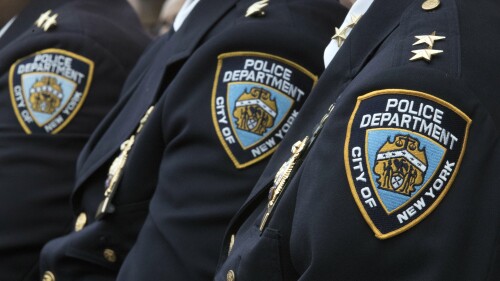By Michelle Theriault Boots
Anchorage Daily News, Alaska
ANCHORAGE, Alaska — After an internal review of 15 years of police shootings, the Anchorage Police Department is planning changes to how it sends officers to the high-risk calls.
The department on Friday released an analysis of 45 incidents that occurred between 2009 and 2023 in which officers fired at members of the public, and whether they injured or killed the person. Eight use-of-force incidents in 2024 weren’t included in the analysis because they’re still being investigated, the department said.
The review was announced over the summer as the department grappled with public unrest over a series of shootings by officers, including four fatal incidents. In August, pressure intensified when a 16-year-old high school student from American Samoa was shot and killed by police responding to a domestic call at her apartment.
The scrutiny did not spur the review, police chief Sean Case said in an interview Wednesday. Ordering the review was one of his first actions when he assumed leadership of the department in July.
“I don’t look at it as public pressure,” he said. “It’s just what we’re supposed to do. This is how it’s supposed to work.”
Certain kinds of calls — chiefly weapons calls, domestic violence, assaults, robberies, stolen vehicles, and people experiencing mental health crises — are the most likely to end in an officer shooting a weapon, the analysis found.
The report says new measures will be required to reduce use-of-force incidents, including training supervisors to take a more active role “quarterbacking” high-risk calls. Other recommendations: encouraging “team” responses, outfitting officers with more effective less-lethal weapons such as Tasers, and increasing the use of drones and other tools that allow officers to safely get a look at an unfolding situation without entering physical danger.
The changes proposed are significant, Case said.
“We believe it is worthwhile to make the changes, but the expectation shouldn’t be that we’re going to completely eliminate (police shootings),” he said.
Among the review’s findings:
—About 67% of officer-involved shootings happened at night, between 6 p.m. and 6 a.m.
—More than 70% of the officers who shot their weapons were within their first eight years of work as a police officer. A little over half happened within the first five years. That could be because earlier-career officers are more likely to be working patrol shifts, and therefore more likely to respond to high-risk calls, Case said.
—Police fired 10.3 rounds per incident on average.
—Police tried to use less-lethal weapons such as Tasers, police dogs and less-lethal ammunition in 17% of the incidents. Case said that low number is partly explained by how quickly many of the incidents escalated. Tasers also have a high failure rate, especially against Alaska outerwear in the winter, Case said. Newer Taser models and other less-lethal weapons that are effective at long range would keep officers farther away from the subject, he said.
—Often, incidents escalated to gunfire very quickly — 47% of the time, less than three minutes elapsed from the moment police arrived on scene to when an officer fired their weapon.
—Police used force on Alaska Native, Pacific Islander, Asian and Black residents disproportionately to their representation in Anchorage’s overall population.
—About a fourth of officers who fired a shot on the job ultimately leave the department. Case said he couldn’t talk about whether any officers had been disciplined for their actions in a shooting incident because of personnel confidentiality rules.
Many of the findings mirror a limited national body of research on police shootings, and the Daily News’ own analysis of 25 years of police shootings, published in September: Incidents unfold quickly, usually involve police being called to a scene rather than initiating contact on their own, and often start with a complaint from the public about a weapon.
[Assembly members propose $75,000 contract to study civilian oversight of Anchorage police]
Of the data conclusions, “there’s nothing that shocked me,” Case said.
But that doesn’t mean changes are not needed, he said.
“There’s a consistent way that law enforcement responds to these incidents, and there’s a consistent result in these incidents,” he said. “This is all predictable. We have enough data on it.”
If you’re getting the same result, it means the training needs to shift, he said.
On Friday, the department also debuted a use-of-force data dashboard that will publish quarterly reports on all uses of force by officers, with maneuver-by-maneuver reporting ranging from a “thigh lock” to a “vehicle pin.”
Data from the second and third quarters indicated that about 14% of arrests involved some kind of use of force, while less than 1% of all calls for service involved officer force.
___
(c)2024 the Alaska Dispatch News (Anchorage, Alaska)
Visit the Alaska Dispatch News (Anchorage, Alaska) at www.adn.com
Distributed by Tribune Content Agency, LLC.






